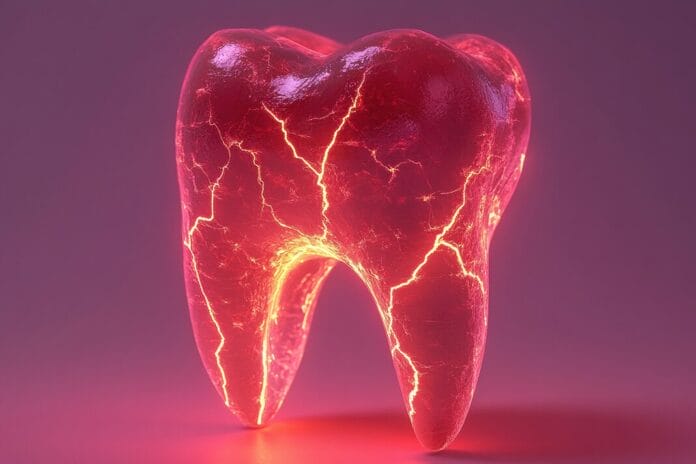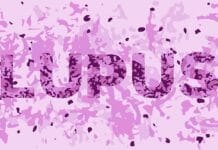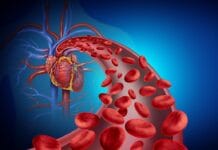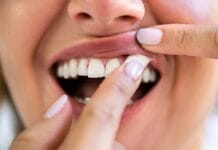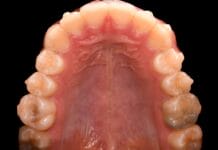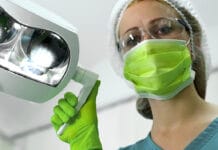Have you ever stepped outside into the cold weather and experienced an instant headache when the air hits your head? The sensation is similar to a sudden ice cream headache without the ice cream. Cold air typically does not cause headaches, so why did that happen?
Allodynia is a possible cause. Allodynia is nerve pain, usually severe, brought on by stimuli that typically do not cause pain.1
How can allodynia affect a patient in the dental office? As dental professionals, we touch people. We could not do our job without touching the face or mouth. We often try to have a gentle touch, but what if that gentle touch causes pain for our patients? How can we manage allodynia in the dental chair?
What is Allodynia?
Allodynia is neuropathic pain where an otherwise non-painful stimulus causes pain. It is a symptom of an underlying condition, not a disease itself. The exact etiology is unknown; however, it is suggested that sensory neuronal fibers stimulate pain pathways potentially due to an error that causes inappropriate pain sensations.2
Allodynia is usually classified by the type of stimulus causing the pain perception or by the location of the symptom/principal site of nociception:1-3
- Type of stimulus that causes pain
- Static or tactile: Gentle touch or light pressure
- Thermal: Mild temperature changes
- Dynamic or mechanical: Moving an object across the skin
- Principle site of nociception
- Cephalic: Scalp, face, neck ears
- Extracephalic: Limbs, trunk
The estimated incidence of those affected with neuropathic pain is approximately 7% to 10% of the general population.3 Of those, it’s estimated about 15% to 20% experience allodynia. However, the exact incidence of neuropathic pain and allodynia is unknown.1
Allodynia is most commonly associated with fibromyalgia, trigeminal neuralgia, multiple sclerosis, diabetic neuropathy, shingles, migraine headaches, trauma that damages nerves, and chemotherapy drugs.1,2 An estimated 40% to 70% of those who suffer from migraines also experience cutaneous allodynia, which usually occurs in cephalic areas but may also occur in extracephalic areas.3
How is allodynia diagnosed?
A thorough health history and neurological exam help determine if the cause of pain is allodynia. Physicians will note any known health conditions and any family history that may be associated. Often, an instigating event leads to the onset of allodynia. When the pain started and if anything may have precipitated the pain, such as a health condition or injury, can be helpful indicators.2
Further evaluation questions may include:2
- Was the onset of allodynia symptoms fast or slow?
- Is the pain progressive?
- Does the pain come and go, or is it constant?
- Does anything alleviate the pain?
- What makes the pain better or worse?
- Is the pain associated with tactile stimuli, movement, temperature, or anything else?
A physical exam includes a visual examination to look for swelling or atrophy in the affected area. Neurological exams are also performed, including isolating light touch (tactile) vs. temperature (thermal) vs. proprioception sensation (mechanical).2
Soft stimuli, such as a cotton swab, are used to check for light touch sensitivity. Something such as a toothpick is used to check for sharp stimuli sensitivity. For example, when testing the facial area, the clinician will use the stimuli on both cheeks by brushing against or gently pressing into the cheek to evaluate if it evokes pain on one side yet has a typical response on the other. Temperature-induced sensitivity using cold stimuli such as ice is assessed in the same manner.2
Other testing to evaluate proprioception, vibration, nerve conduction studies, and reflex studies may be performed. They are not necessarily indicators of allodynia but may help to establish the underlying cause. Further blood tests, urine tests, and imaging may also be indicated.1,2
Medical Treatment and Management
As allodynia is a symptom of an underlying condition and not a disease itself, diagnosing and treating the underlying cause may help prevent the progression of allodynia. Identifying the underlying condition will also determine the course of treatment.1,2
Medications that can be beneficial in treating allodynia are sodium channel blockers, calcium channel antagonists, anticonvulsants, and medications for neuropathic pain, such as gabapentin. There is some evidence that antidepressants like serotonin-norepinephrine reuptake inhibitors (SNRIs) and tricyclic antidepressants (TCAs) may help with neuropathic pain. However, selective serotonin reuptake inhibitors (SSRIs) show mixed to disappointing effectiveness, so they are not recommended for allodynia treatment.2
Nonsteroidal anti-inflammatory drugs (NSAIDs) and opioids have shown little evidence of effectiveness. Opioid use can actually be the cause of allodynia, as opioids can cause long-term neuropathic pain.2
Topical products such as lidocaine and capsaicin patches or creams can be effective. Still, they may have other unwanted side effects and limited effectiveness depending on the underlying cause of the pain. Botox (botulinum toxin A) can be helpful, although this is often a last choice as a recommended option.2
Non-medical treatment such as counseling, cognitive behavioral, physical, and biofeedback therapy may be utilized. Counseling and cognitive behavioral therapy typically focus on alternate coping mechanisms for pain. Physical therapy often concentrates on desensitizing the areas of pain.1,2
Allodynia and the Dental Patient
As dental professionals, we strive to use a light touch and be gentle with our patients. For patients with allodynia, however, that touch may cause severe pain. The light touch of periodontal probing can be uncomfortable for some people, but for those with allodynia, it may send severe shooting pains through their mouth.
Recognizing allodynia in dentistry is important to help us manage our patient’s pain and keep them comfortable while undergoing dental treatment. Communication with our patients is imperative to ascertain if allodynia affects them. Most patients who experience allodynia know they have pain caused by something out of the ordinary. They may not be aware it has a name, but they are cognizant of the symptoms and what causes the pain.
If a patient presents with pain and no definitive dental issue can be ascertained, then allodynia may be suspected. In such a situation, referring the patient to their primary care physician or a specialist for an evaluation may be indicated. This can help avoid unnecessary dental treatment for what may not be dental-related pain.4
A dental professional can inquire about the pain symptoms when a patient has any conditions associated with allodynia. Asking a patient who experiences migraines if touch or temperature changes cause pain during migraine attacks can help the practitioner ascertain if allodynia may be present.2
If present, then the approach to care can be adjusted. Depending on the particular stimuli, topical or local anesthetics may help prevent allodynia.5
The Reflex Sympathetic Dystrophy Syndrome Association also suggests the following guidelines for dental providers when treating patients who experience allodynia:5
- The use of hypoallergenic materials may be helpful with sensitivities.
- Bright lights can be a trigger. Sunglasses or shaded protective eyewear may help.
- Room temperature may need to be adjusted per patients’ needs.
- Avoid placing a patient in the path of vented air from HVAC systems or fans.
- Avoid anything bumping into the patient.
- Patient position is key to positive outcomes. To support the patient, consider utilizing bolsters, pillows, gel support, and/or blankets.
- Keep noise to a minimum. Noise from monitors, dental equipment, diagnostics, voices, phones, TV, intercom systems, etc., can elevate pain.
- Shorter appointment times may help minimize flares.
In Closing
Dental professionals should be knowledgeable about allodynia and understand how it may affect their patients. Evaluating each patient’s health history is standard of care, but recognizing conditions associated with allodynia may be helpful in reducing stimuli that trigger an episode. Reassessing and adjusting treatment may be necessary to keep patients who experience allodynia more comfortable.
Before you leave, check out the Today’s RDH self-study CE courses. All courses are peer-reviewed and non-sponsored to focus solely on pure education. Click here now.
Listen to the Today’s RDH Dental Hygiene Podcast Below:
References
- Allodynia. (2021, May 27). Cleveland Clinic. https://my.clevelandclinic.org/health/symptoms/21570-allodynia
- He, Y., Kim, P.Y. (2023, September 4). Allodynia. StatPearls. https://www.ncbi.nlm.nih.gov/books/NBK537129/
- Mínguez-Olaondo, A., Quintas, S., Morollón Sánchez-Mateos, N., et al. Cutaneous Allodynia in Migraine: A Narrative Review. Frontiers in Neurology. 2022; 12: 831035. https://doi.org/10.3389/fneur.2021.831035
- Yilmaz, M., Kale, E. The Link Between Cutaneous Allodynia and Pain/Sensitivity in Teeth and Gums During Migraine Episodes. BMC Oral Health. 2024; 24: 1043. https://bmcoralhealth.biomedcentral.com/articles/10.1186/s12903-024-04705-9
- Dental Guidelines for CRPS/RSD Patients: Handle With Care! (2020, November 24). Reflex Sympathetic Dystrophy Syndrome Association. https://rsds.org/wp-content/uploads/2020/12/Dental-Guidelines-11-24-2020.pdf

